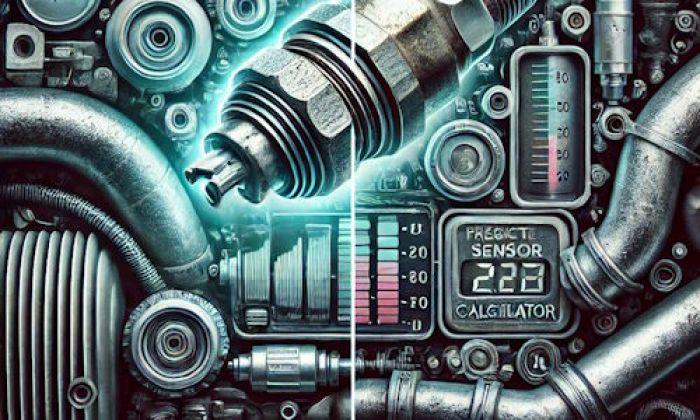Cars are complex machines made out of approx 30,000 different parts, all of which need to work in perfect harmony for your car to perform as it should. Some people believe that adding liquid additives will make their engines and other parts of the powertrain better but that is a topic of a longlasting debate that does not seem to ever end.
Performance additives highlights
- Efficiency:close to zero
- Availability:lots of brands and products
- Average price: $45
- Way to use:pour into gas or oil
- DIY use:yes
- Experts' advice:only biased advice
- Independent testing:negative
- Consequences:contaminated oil, changed gas properties, loss of money, no effects on performance
What is Liqui Moly Cera Tec?
Liqui Moly Cera Tec is a specialized engine oil compound additive designed by a German lubrication company called Liqui Moly. The Cera Tec is intended to improve the levels of performance, efficiency, and reliability of engines by reducing friction between engine internal components and reducing the overall wear on some of the engine's most critical components.
The main compound ingredient found within the Cera Tec is ceramic which is designed to create a thick protective layer on the inside of the engine. This helps to reduce contact between metal parts which supposedly reduces friction and thus protects the engine, improves fuel efficiency, and makes the engine last longer.
How to Use Liqui Moly Cera Tec?
Before doing anything, it would be a good idea to drive your car a bit just so you can remember some of the car's essential metrics such as MPG, noise levels, vibrations, etc so you can compare these to when you add in Cera Tec.
Be sure to follow these steps when wanting to use Liqui Moly Cera Tec:
· Prepare Your Car – The first thing you need to do is park your car on a level surface, engage the parking brake, and let it cool down. The ideal moment to add additives to your engine is when you decide to do an oil change, so be sure to gather all the tools in advance.
· Drain Old Oil – Go ahead and locate the oil drain plug underneath your car, twist it, and place a large plastic container/pan in which the oil will drain out. Let all of the oil out and it would also be a good idea to replace the oil filter at this point.
· Add Cera Tec – When all of the oil is gone from the reservoir, make sure to take your Cera Tec through the oil filler cap. Be sure to use a funnel to avoid spillage and also make sure not to overfill.
· Add New Oil – After adding Cera Tec, it's time to add your new engine oil as then the two will mix together. Refer to your manual for the oil type and amount, replace the oil filler cap, and close it all up.
· Start the Car – Now it's time to start the car up and let it idle for a bit until it reaches some temperature. This is needed for the Cera Tec to mix with the oil and to properly circulate through your engine.
· Check Oil Levels and Compare – Turn the car off after a few minutes, wait for the oil to settle, and check the oil level to see if it's at its correct level. If it is, you can go ahead and drive the car and check to see if you are going to notice any changes with Cera Tec.
Benefits and Drawbacks of Using Liqui Moly Cera Tec
|
Advantages of Liqui Moly Cera Tec |
Disadvantages of Liqui Moly Cera Tec |
|
Reduced Friction and Wear – Cera Tec does indeed reduce internal engine components' friction and wear. |
Inconsistent Results – Likely the biggest drawback of Cera Tec is that it does not offer the same results across multiple applications. The results vary due to numerous other factors. |
|
Enhanced Protection – It is safe to assume that Liqui Moly Cera Tec offers an additional layer of protection, especially during cold start ups and aggressive driving. |
Price – It's not too difficult to recommend something expensive you know is going to benefit you. It's not that easy when the benefits aren't consistent, or even present at all. |
|
Better Fuel Efficiency – Quite a few sources are stating that Cera Tec does make the engine run a bit more efficiently but the results vary a lot. |
Compatibility? Many people doubt that Cera Tec is as compatible as Liqui Moly presents it to be. The reality is that modern-day cars come with different engines, hybrids, forced induction, AddBlue, DPF, etc (more variables than ever) |
|
Engine Compatibility – The good thing about Cera Tec is that it supposedly works well both with diesel and gasoline engines which is not usually the case with most additives. |
Maintenance and Endorsement (Lack Of) – Liqui Moly Cera Tec is never going to be a substitute for regular maintenance while also seemingly not being endorsed by automakers directly. |
|
Convenient – Another great benefit of Cera Tec is that it is really easy to use as all you have to do is fill it up when you change your oil. |
It Prevents, It Does Not Fix – This additive is there to prevent issues from taking place which means that it won't help if something is indeed wrong. |
Older Engines vs Newer Engines With Liqui Moly Cera Tec
There are a few sources online stating that Cera Tec works better with older engines as older engines tend to have more wear on critical engine parts. As older engines tend to suffer from decreased performance over time, it makes more sense for Cera Tec to work better with older engines as it is intended to restore a bit of lost power you lose through wear and tear.
Newer engines are substantially more complex which means that there are many more variables you need to consider when wanting to add additives of any kind. With hybridization, forced induction, downsizing, and existing efficiency additives, adding Cera Tec is riskier compared to adding Cera Tec to older engines.
Lastly, newer engines have less wear and tear which means that there is less that can be done to improve them.
How to Make the Most out of Liqui Moly Cera Tec?
To make the most out of Cera Tec, you need to make the most out of your engine. The first thing you need to do is not expect Cera Tec to solve any issues. This means that your regular maintenance and repair tasks should be completely independent of adding and using Cera Tec.
You should also use Cera Tec during an existing pre-scheduled oil change. For the best mixture possible, it's best to add Cera Tec first and then add oil as Cera Tec should circulate the engine first. Last but not least, be sure to consult your mechanic before you decide to add any additives to your car and check if adding additives could void your warranty.
Is Liqui Moly Cera Tec Worth It?
First of all, we can say that Liqui Moly is not a rip-off as it does offer benefits across the range but the real kicker here is if those benefits are noticeable enough to justify adding 3rd party compounds to your engine.
Many independent tests have shown that Cera Tec does work by making the engine smoother, lowering the vibrations, making it quieter, and even making it more efficient. However, Cera Tec isn't the only additive of this kind on the market and many people believe that it isn't at the top of that list.
All in all, yes, Liqui Moly Cera Tec is worth the money because it genuinely helps. However, don't be expecting miracles as one engine additive can only do so much.
About the authors
The CarAraC research team is composed of seasoned auto mechanics and automotive industry professionals, including individuals with advanced degrees and certifications in their field. Our team members boast prestigious credentials, reflecting their extensive knowledge and skills. These qualifications include: IMI: Institute of the Motor Industry, ASE-Certified Master Automobile Technicians; Coventry University, Graduate of MA in Automotive Journalism; Politecnico di Torino, Italy, MS Automotive Engineering; Ss. Cyril and Methodius University in Skopje, Mechanical University in Skopje; TOC Automotive College; DHA Suffa University, Department of Mechanical Engineering






Add comment